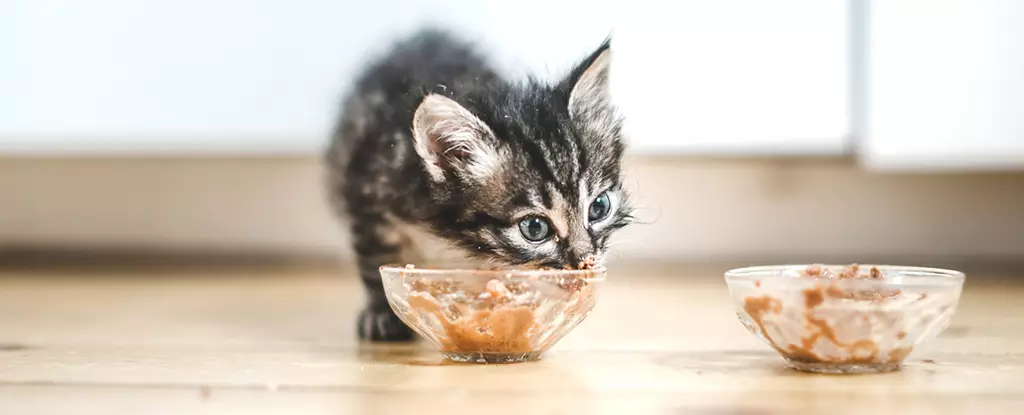Recent reports have revealed a troubling trend: at least six domestic cats in Los Angeles County have succumbed to the H5N1 avian influenza virus, more commonly known as bird flu. This outbreak, primarily linked to the consumption of raw pet foods and unpasteurized dairy products, raises serious concerns for pet owners and public health officials alike. The situation has escalated alarmingly, leaving pet owners to reconcile the joy of having furry companions with the lurking dangers of viral infections.
One particularly heartbreaking incident involved a household with five cats, where two of them tragically died after consuming raw food from two distinct brands. As these cats were exclusively kept indoors, a strict diet of raw pet food emerged as a plausible vector for the infection. The rapid onset of symptoms across the household was striking—four felines exhibited severe clinical signs, while one cat showed a milder reaction. The veterinary response to provide humane euthanasia for the severely afflicted cats underscores the seriousness of the situation. Such instances highlight the often-overlooked vulnerability of our pets to zoonotic diseases, particularly in this age of increasing viral transmission between species.
In this case, the Los Angeles County Department of Public Health (LACDPH) identified the culprit: a particular brand of raw pet food named ‘Monarch Raw Pet Food,’ which was confirmed to contain live H5N1 virus particles. The recommendations from health authorities are unequivocal: any consumers of this product must dispose of it immediately to mitigate further risks. The outbreak is not limited to this incident; another single-cat household also reported acute illness in their feline companion after consuming raw pet food, adding to the growing concern regarding the safety of raw diets for pets.
Moreover, the tragedy extends beyond just pet food. Five additional cats fell victim to H5N1 after ingesting raw milk from a human consumption recall, further illustrating the extensive risks associated with raw and unprocessed animal products. The fact that these cats were confirmed to carry H5N1 emphasizes a rising trend of the virus adapting to infect non-avian species. With such alarming developments, pet owners must be vigilant and informed about the potential health hazards posed by seemingly innocuous food choices.
The emergence of H5N1 in cats is a matter of broader concern, as it not only affects the immediate health of pets but also poses potential risks for human health. Historically, influenza viruses have shown a propensity for mutation, raising fears that the H5N1 virus could evolve to spread more widely across animal populations and even to humans. Currently, there is no evidence of cat-to-cat or cat-to-human transmission in Los Angeles County, and public health officials express that the risk to the general public remains low. Nevertheless, the reality of 66 confirmed H5N1 infections and one death in humans linked to the virus serves as a stark reminder that vigilance is vital.
Experts warn individuals in close contact with animals—especially those who interact with wild birds, infected livestock, or diseased pets—to exercise caution. The potential for cross-species transmission of H5N1 is particularly disturbing, especially as the virus has been detected in a variety of animal populations globally, including dairy cattle. This intersection of human, animal, and environmental health is increasingly relevant; it mirrors the One Health approach that emphasizes the interconnectedness of living systems.
In light of this outbreak, several best practices emerge for pet owners aiming to safeguard their beloved companions. Firstly, thoroughly avoiding the feeding of raw dairy, meats, and poultry is crucial. Such diets carry inherent health risks—not just from potential viral infections but also due to bacterial contamination. Keeping abreast of food recalls and sharing this information within community circles can create a network of awareness that greatly aids in preventing further cases.
Additionally, pet owners should remain vigilant for signs of avian influenza in their animals. Symptoms such as fever, extreme lethargy, appetite loss, jaundice, neurological issues, and respiratory distress warrant immediate veterinary evaluation. Early recognition of these signs can lead to prompt intervention, potentially saving lives in some of the most vulnerable pets.
The emergence of H5N1 in domestic cats serves as a sobering reminder of the delicate balance between human and animal health. As observations of this virus expand across California and beyond, it is crucial for pet owners to take preventive measures seriously. In a world where the intersection of wildlife, domestic animals, and humans is increasingly interconnected, responsible pet ownership and adherence to public health guidance are more important than ever to ensure the safety of our furry friends and ourselves.


Leave a Reply